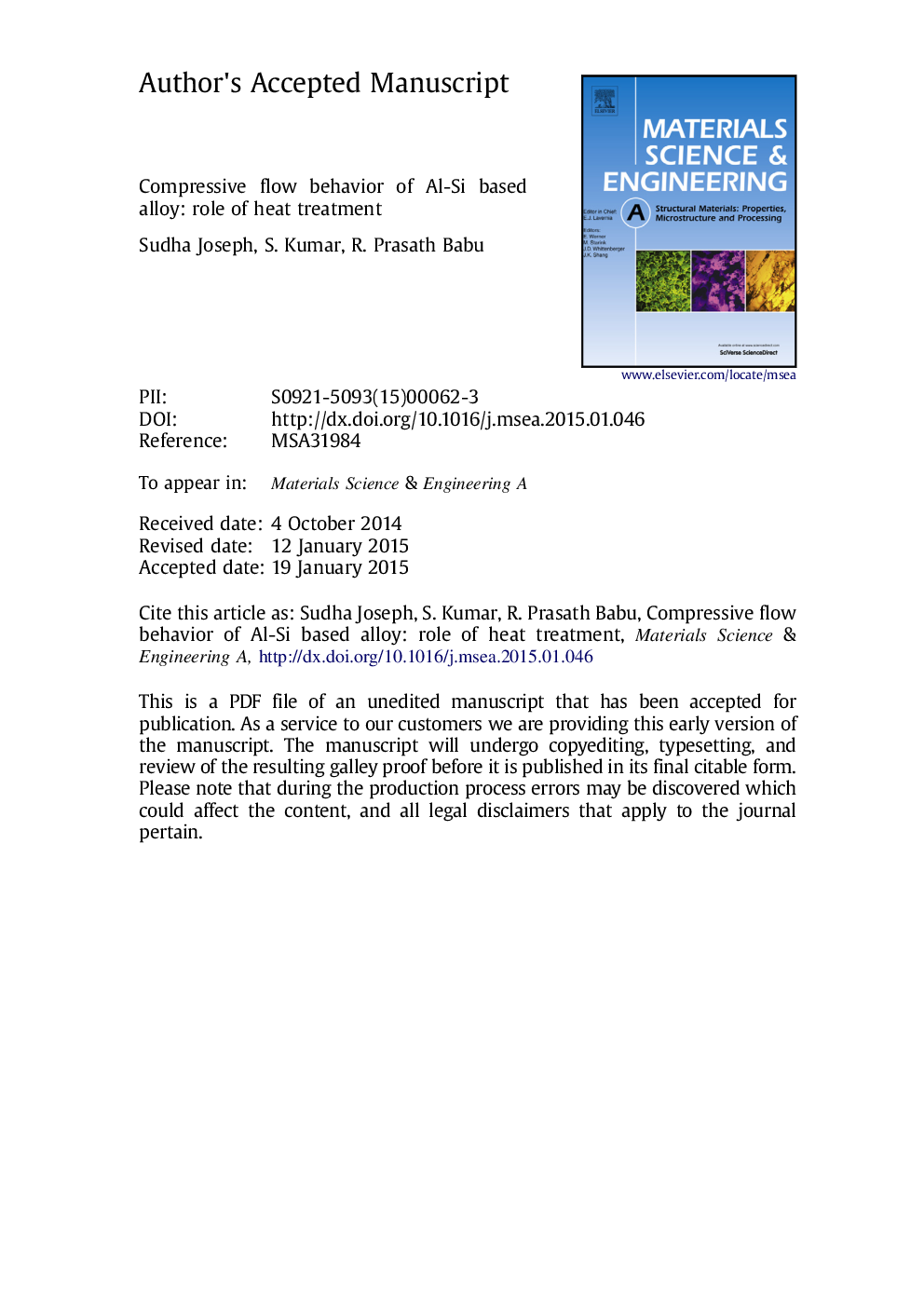| کد مقاله | کد نشریه | سال انتشار | مقاله انگلیسی | نسخه تمام متن |
|---|---|---|---|---|
| 1574466 | 1514714 | 2015 | 40 صفحه PDF | دانلود رایگان |
عنوان انگلیسی مقاله ISI
Compressive flow behavior of Al-Si based alloy: Role of heat treatment
ترجمه فارسی عنوان
رفتار جریان فشاری آلیاژ آلومینیوم: نقش عملیات حرارتی
دانلود مقاله + سفارش ترجمه
دانلود مقاله ISI انگلیسی
رایگان برای ایرانیان
کلمات کلیدی
آلیاژ آلومینیوم، حرارت درمانی، حساسیت نرخ فشار، مدل سازی عنصر محدود مکانیزم تغییر شکل
موضوعات مرتبط
مهندسی و علوم پایه
مهندسی مواد
دانش مواد (عمومی)
چکیده انگلیسی
The flow characteristics of a near eutectic Al-Si based cast alloy have been examined in compression at strain rates varying from 3Ã10â4 to 102 sâ1 and at three different temperatures, i.e., room temperature (RT), 100 °C and 200 °C. The dependence of the flow behavior on heat treatment is studied by testing the alloy in non-heat treated (NHT) and heat treated (HT) conditions. The heat treatment has strong influence on strain rate sensitivity (SRS), strength and work hardening behavior of the alloy. It is observed that the strength of the alloy increases with increase in strain rate and it increases more rapidly above the strain rate of 10â1 sâ1 in HT condition at all the temperatures, and at 100 °C and 200 °C in NHT condition. The thermally dependent process taking place in the HT matrix is responsible for the observed greater SRS in HT condition. The alloy in HT condition exhibits a larger work hardening rate than in NHT condition during initial stages of straining. However, the hardening rate decreases more sharply at higher strains in HT condition due to precipitate shearing and higher rate of Si particle fracture. Thermal hardening is observed at 200 °C in NHT condition due to precipitate formation, which results in increased SRS at higher temperatures. Thermal softening is observed in HT condition at 200 °C due to precipitate coarsening, which leads to a decrease in SRS at higher temperatures. Stress simulations by a finite element method support the experimentally observed particle and matrix fracture behavior. A negative SRS and serrated flow are observed in the lower strain rate regime (3Ã10â4-10â2 sâ1) at RT and 100 °C, in both NHT and HT conditions. The observations show that both dynamic strain aging (DSA) and precipitate shearing play a role in serrated flow.
ناشر
Database: Elsevier - ScienceDirect (ساینس دایرکت)
Journal: Materials Science and Engineering: A - Volume 629, 1 April 2015, Pages 41-53
Journal: Materials Science and Engineering: A - Volume 629, 1 April 2015, Pages 41-53
نویسندگان
Sudha Joseph, S. Kumar, R. Prasath Babu,
